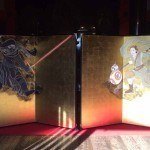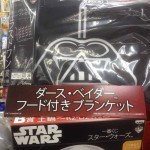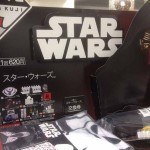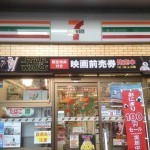Like this post? Help us by sharing it!
What might come as some surprise is how much George Lucas and the Star Wars franchise are indebted to Japan and Japanese culture – a fact acknowledged by the big man himself.
So, before I get too carried away in my excitement, let me introduce you to a few things you might not have known about Star Wars and Japanese culture.
Star Wars was inspired by the films of Akira Kurosawa
George Lucas has never been shy of acknowledging the huge debt that the Star Wars saga has to pay to Akira Kurosawa, Japan’s most venerated filmmaker and the director of such classics as Ran, Rashomon, Seven Samurai, Yojimbo, and The Hidden Fortress. In interviews, Lucas recalls being struck by how Kurosawa’s films thrust Western audiences into the centre of an alien world without any background explanation of that world’s culture and rules. He deliberately used the same approach in the Star Wars films – shoving viewers right into the intergalactic action without so much as a by-your-leave. Feudal Japan might as well be outer space to most Western observers, after all.
As well as adopting this storytelling philosophy, Lucas borrowed prolifically from Kurosawa’s filmmaking in general. The plot of Star Wars, for instance, is loosely based on Kurosawa’s masterpiece The Hidden Fortress – in which two peasants assist a battle-hardened general and a princess in their rebellion, and a climactic battle is fought between the general and a former rival.
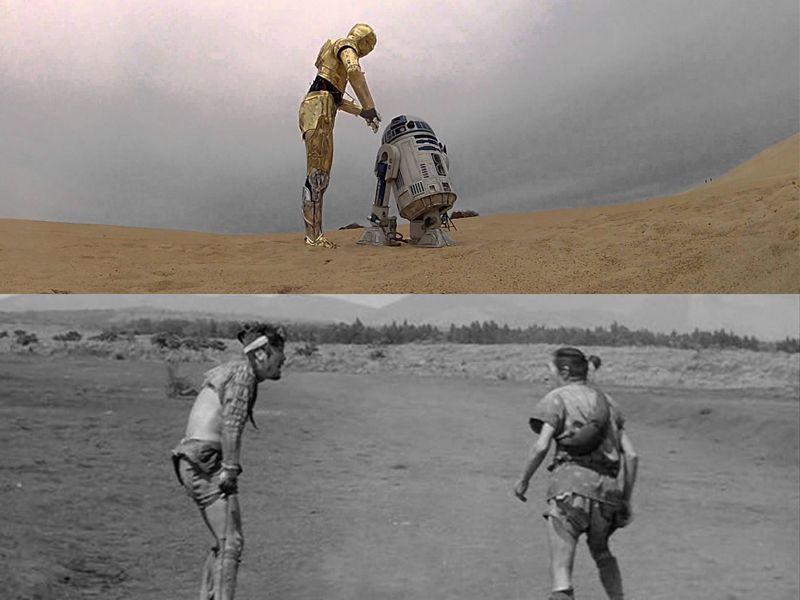
Sound familiar? That’s probably because Kurosawa’s peasants correspond to Lucas’s R2D2 and C3PO; his General Rokurota is a Japanese Obi-wan Kenobi; Princess Yuki is an analogue of Princess Leia – and the old rival is, of course, Darth Vader.
Lucas’s filmography pays homage to Kurosawa’s visual aesthetic, too. The most obvious examples are the blizzard on Hoth in The Empire Strikes Back and the binary sunrise on Tatooine in A New Hope – both of which were inspired by scenes in Kurosawa’s Dersu Uzala, released just two years before the first Star Wars movie.
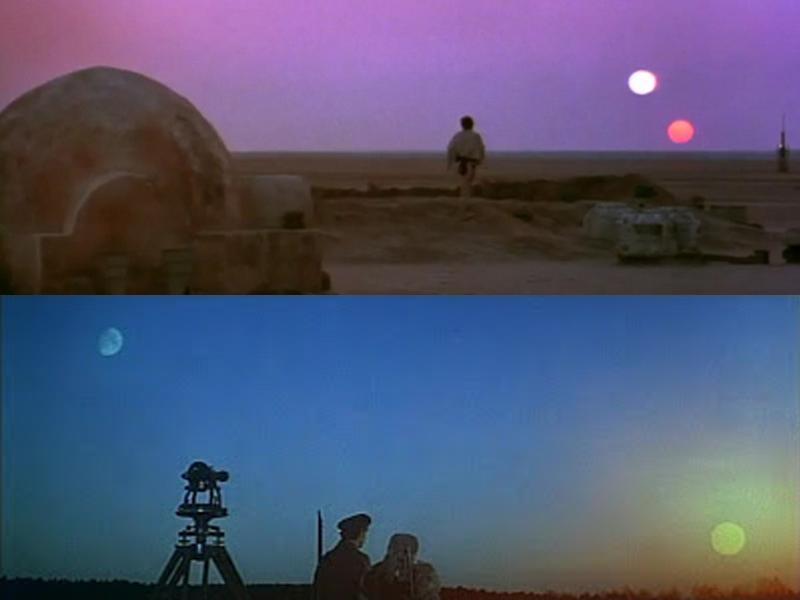
Now tell me that isn’t kind of cool.
Jedi Knights: the samurai from outer space
George Lucas’s interest in Japan didn’t stop at an admiration for Kurosawa’s filmmaking; an appreciation for Japanese traditional culture in general pervades the Star Wars films. Nowhere is this more apparent than in the members of the Jedi Order, whose noble values and discipline bear a close resemblance to bushido: the code of honour used by Japanese samurai.
It is not just the Jedi philosophy that identifies them with the Japanese warrior class – their clothing is reminiscent of the robes worn by samurai, and their style of lightsabre fighting is closely modelled on the style of sword fighting practised with a samurai katana. And if you don’t believe me, apparently several people have written books about it. So there.
A Japanese Darth Vader?
If you needed any more evidence that Jedi are, in fact, the samurai from outer space – it might interest you to know that the actor originally earmarked for the role of the wise and worldly Obi-wan Kenobi was none other than Toshiro Mifune, who played General Rokurota in The Hidden Fortress. Oh yes, the plot thickens!
Under the impression that Star Wars would be a children’s film, Mifune reportedly turned down the role because he was afraid the franchise might cheapen the image of samurai culture. Mifune’s daughter claims that Lucas then offered the much-loved Japanese actor the role of Darth Vader (a part now synonymous with the voice of James Earl Jones), but that he declined this too.
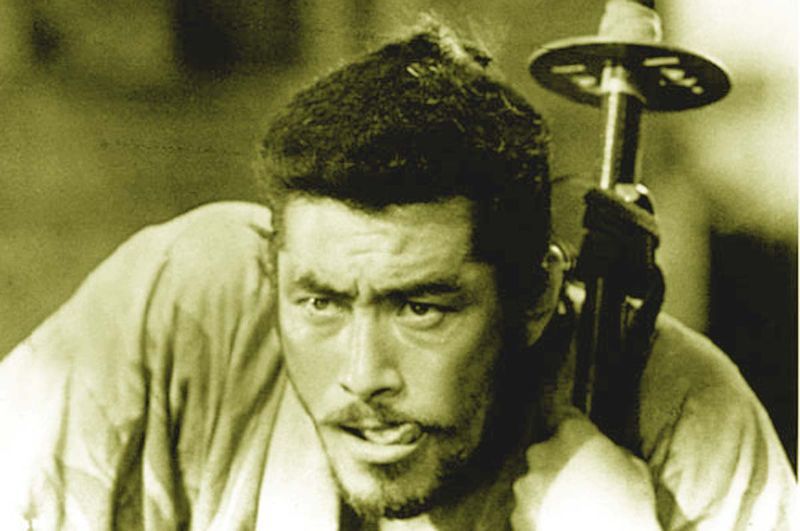
So could we have ended up with a very different Obi-wan – or Darth Vader? Very possibly!
Costume dramas
The influence of Japanese culture on Star Wars is obvious once you start looking for it. Even if you weren’t aware of Lucas’s fondness for samurai movies or his admiration for Toshiro Mifune, you might already have noticed parallels with Japanese culture in the costumes of many of the characters:
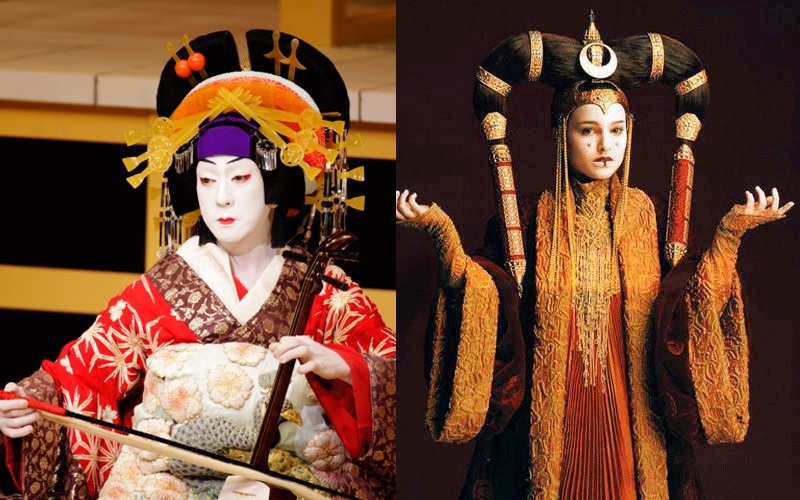
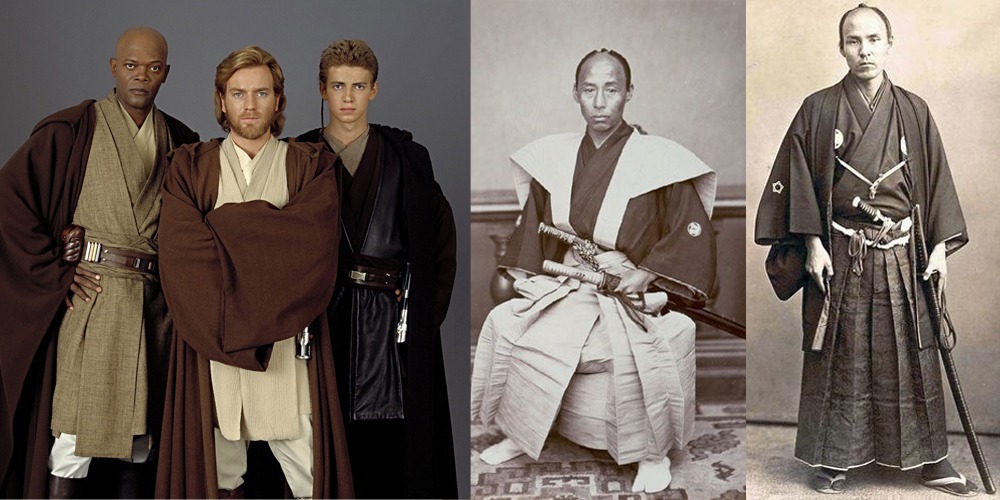
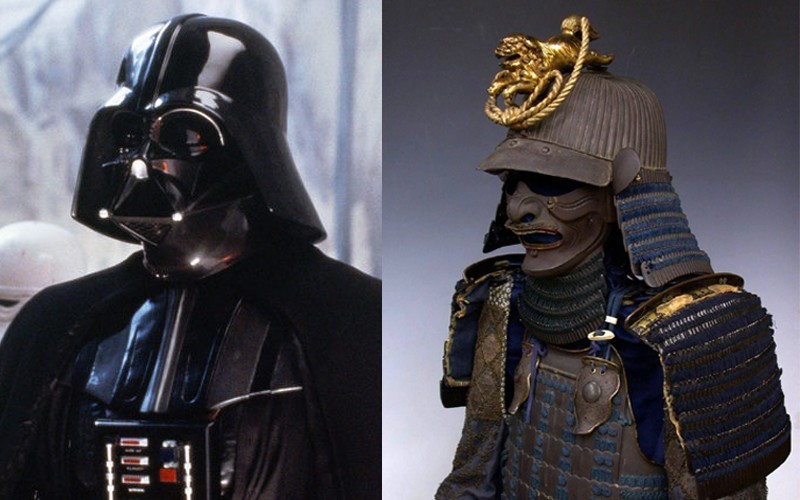
Star Wars in Japan today
If you thought that Star Wars overkill was bad in the UK and the USA, just take a look at its popularity in Japan. Perhaps it’s the echoes of Japanese traditional culture, or perhaps it’s the kawaii potential of ewoks, wookies, and even the much maligned Jar Jar Binks – but whatever the reason, the Force is undeniably strong in Japan.
With Star Wars merchandise and marketing up and down Japan, as you can see from the gallery below, there’s no shortage of exposure for our favourite intergalactic saga in the Land of the Rising Sun!
My personal favourite Star Wars merchandise are these May Dolls – or Gogatsu Ningyo as they are known in Japanese. Traditionally, these miniature suits of samurai armour are set up in Japanese homes in spring and autumn to encourage boys to grow up into strong and healthy young men. A few years ago, Japan launched their own Star-Wars-themed May Dolls, which feature Darth Vader, storm troopers, and the crest of the Empire instead of a coat of arms.
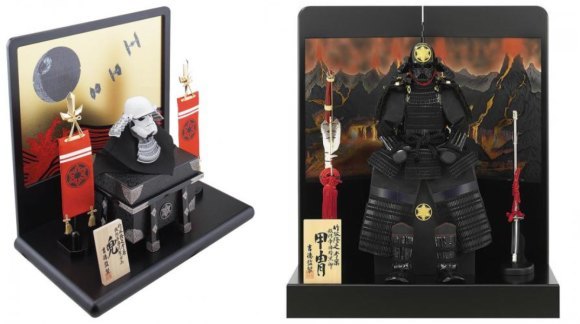
Why Japanese parents want to encourage their younglings to grow up to be evil Sith lords I cannot say, but a film influenced by Japanese culture then influencing Japanese culture in its turn – like a sort of giant intergalactic ouroboros – is very pleasing to me.
I could go on about this subject until the tauntauns come home, but I think I should probably leave it there and get myself out to the cinema!
Are you dreaming of exploring Japan yourself? Our expert Japan holidays team is here to help. Until next time, may the force be with you…





